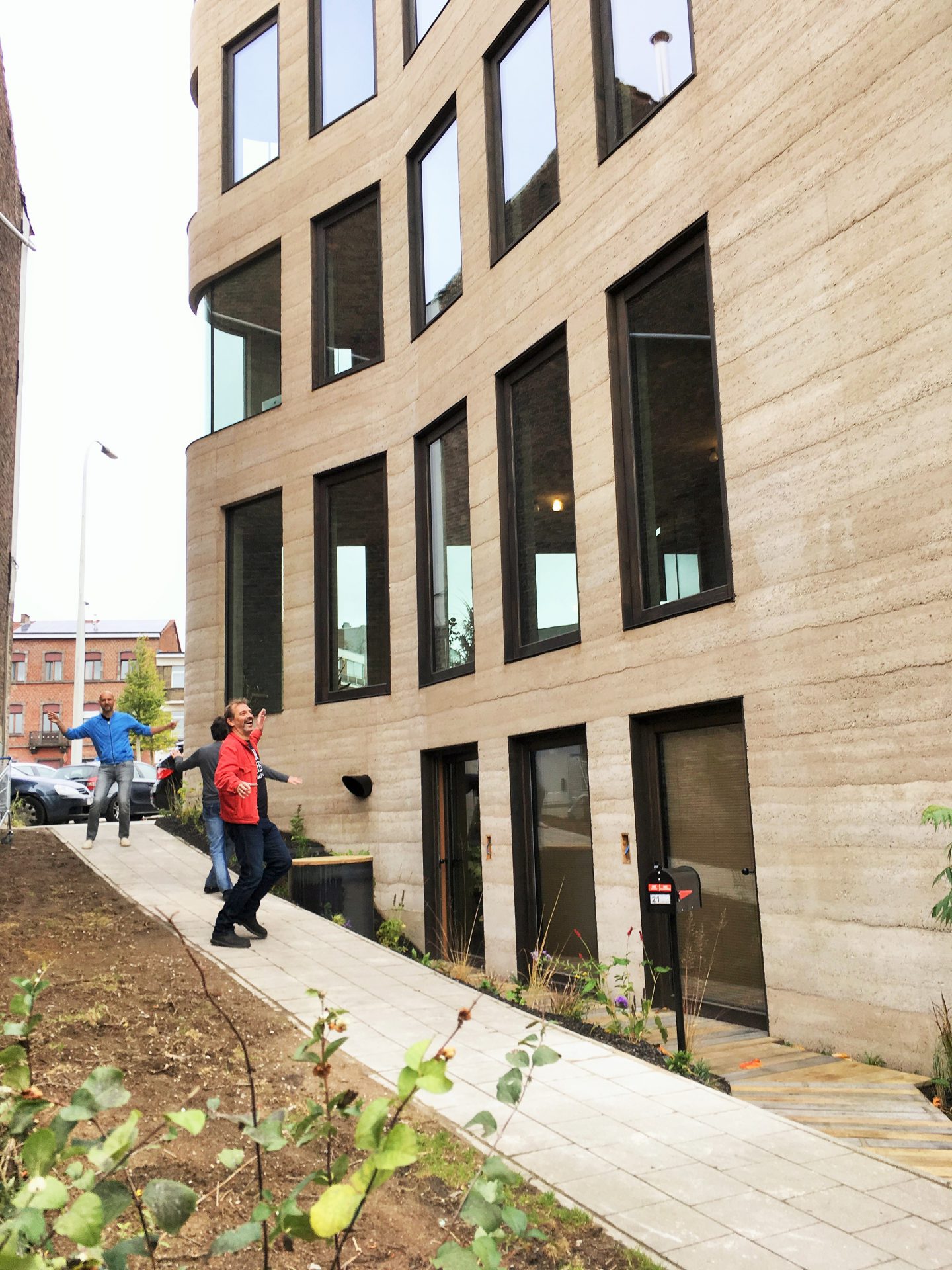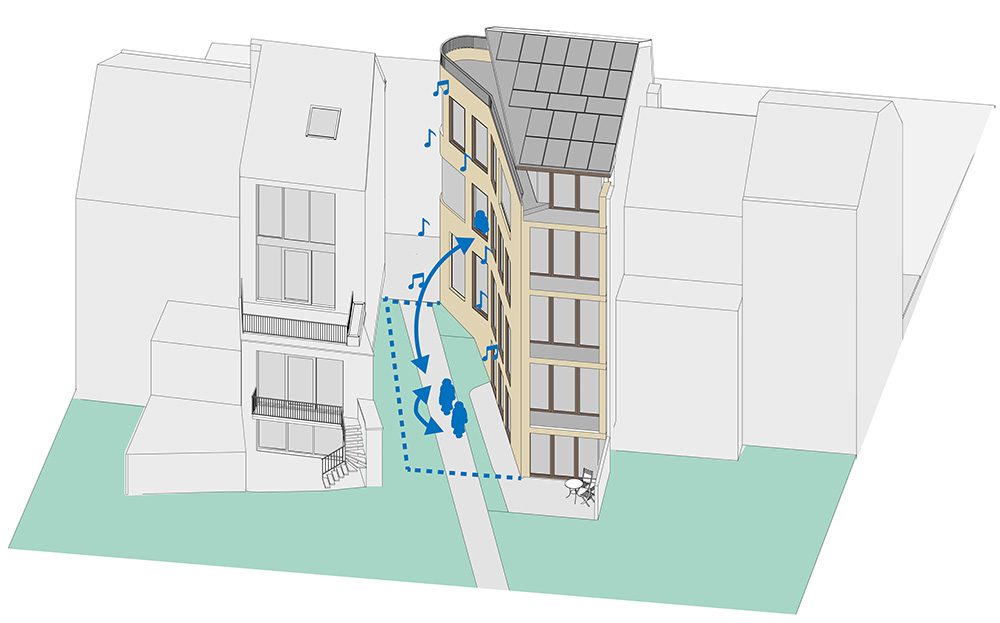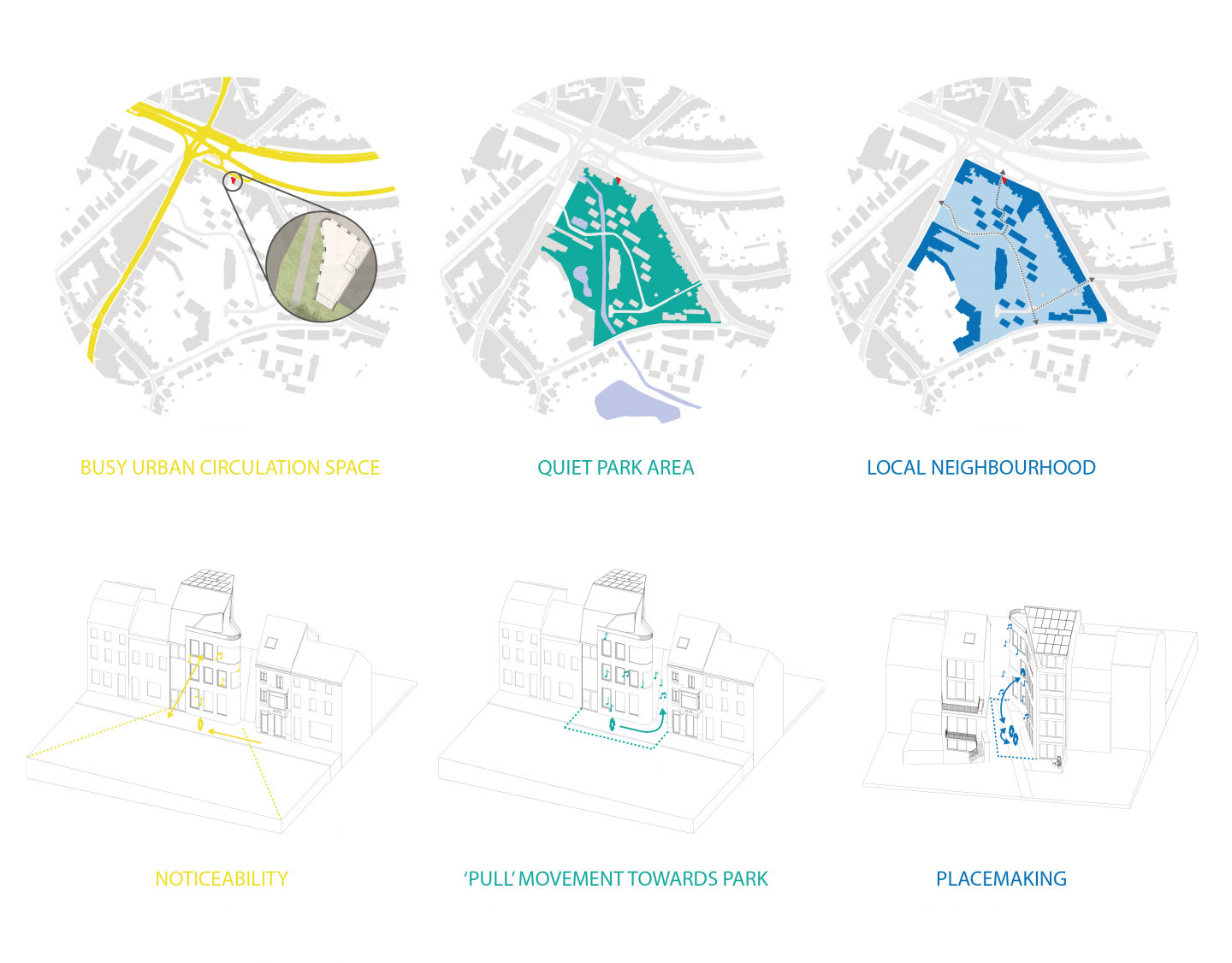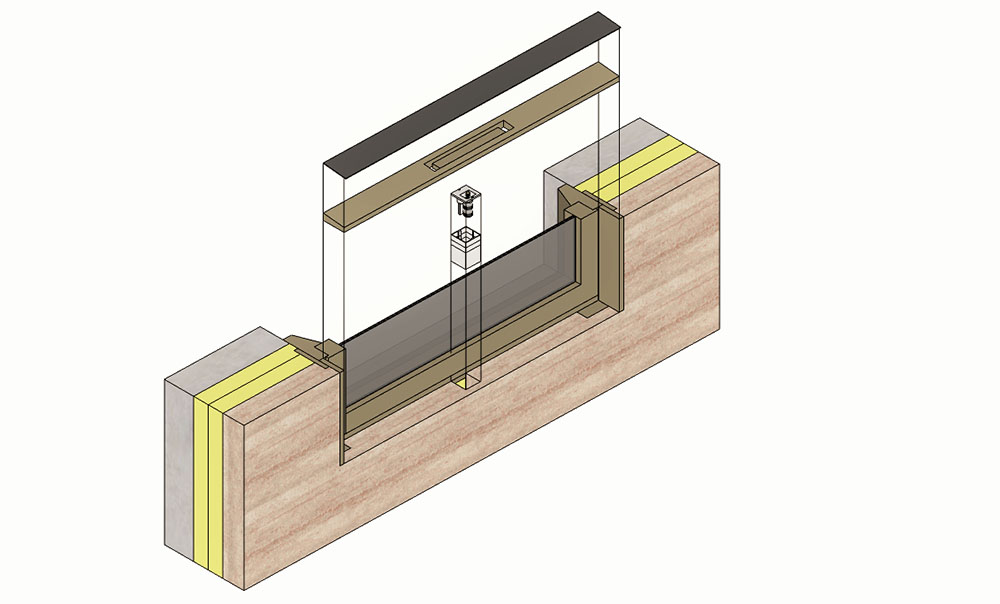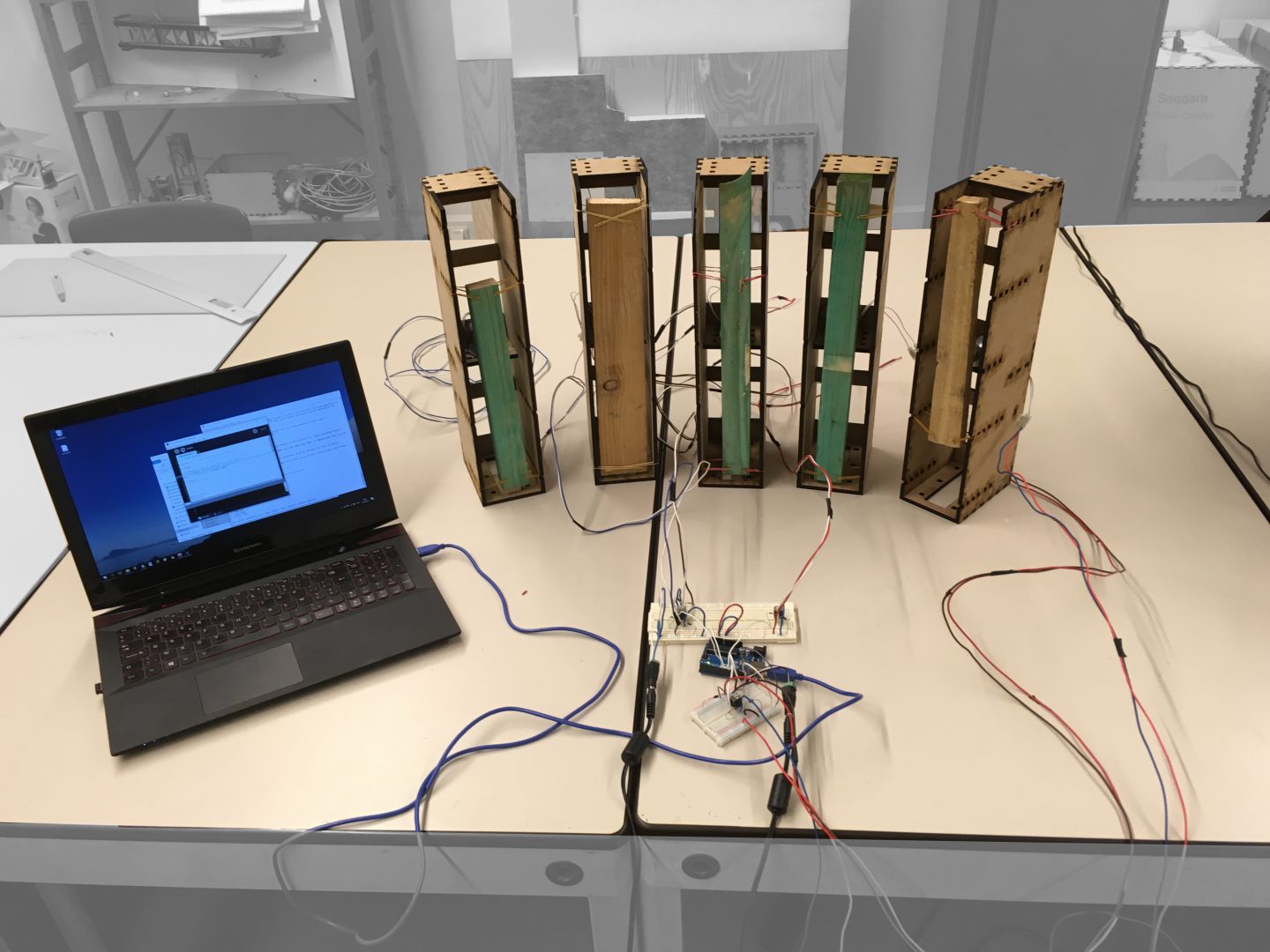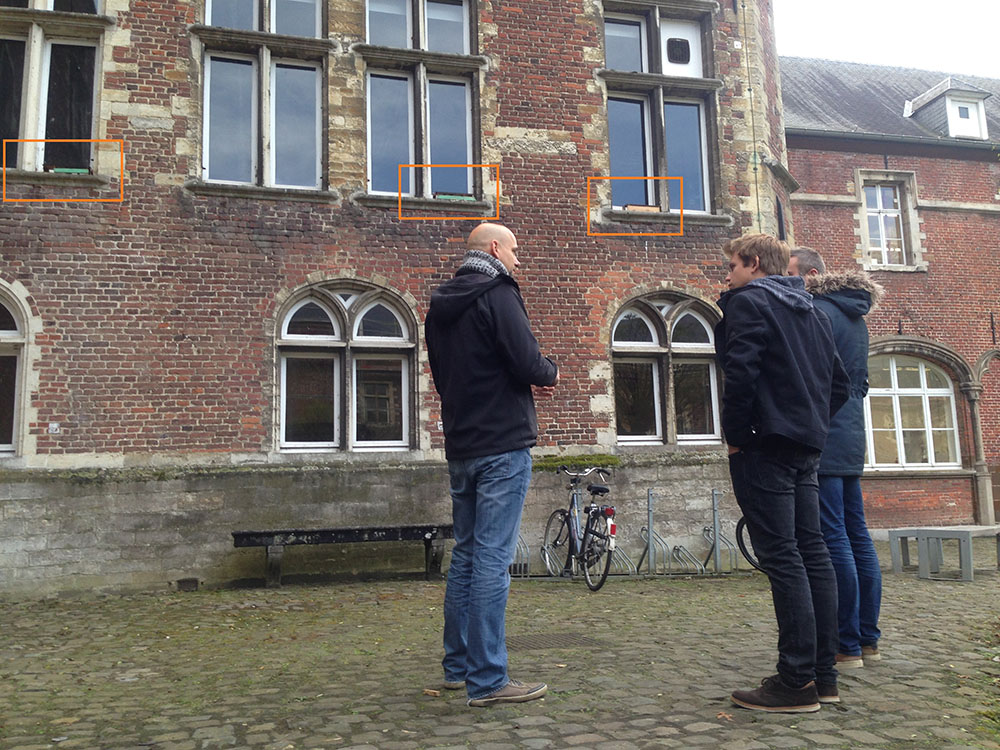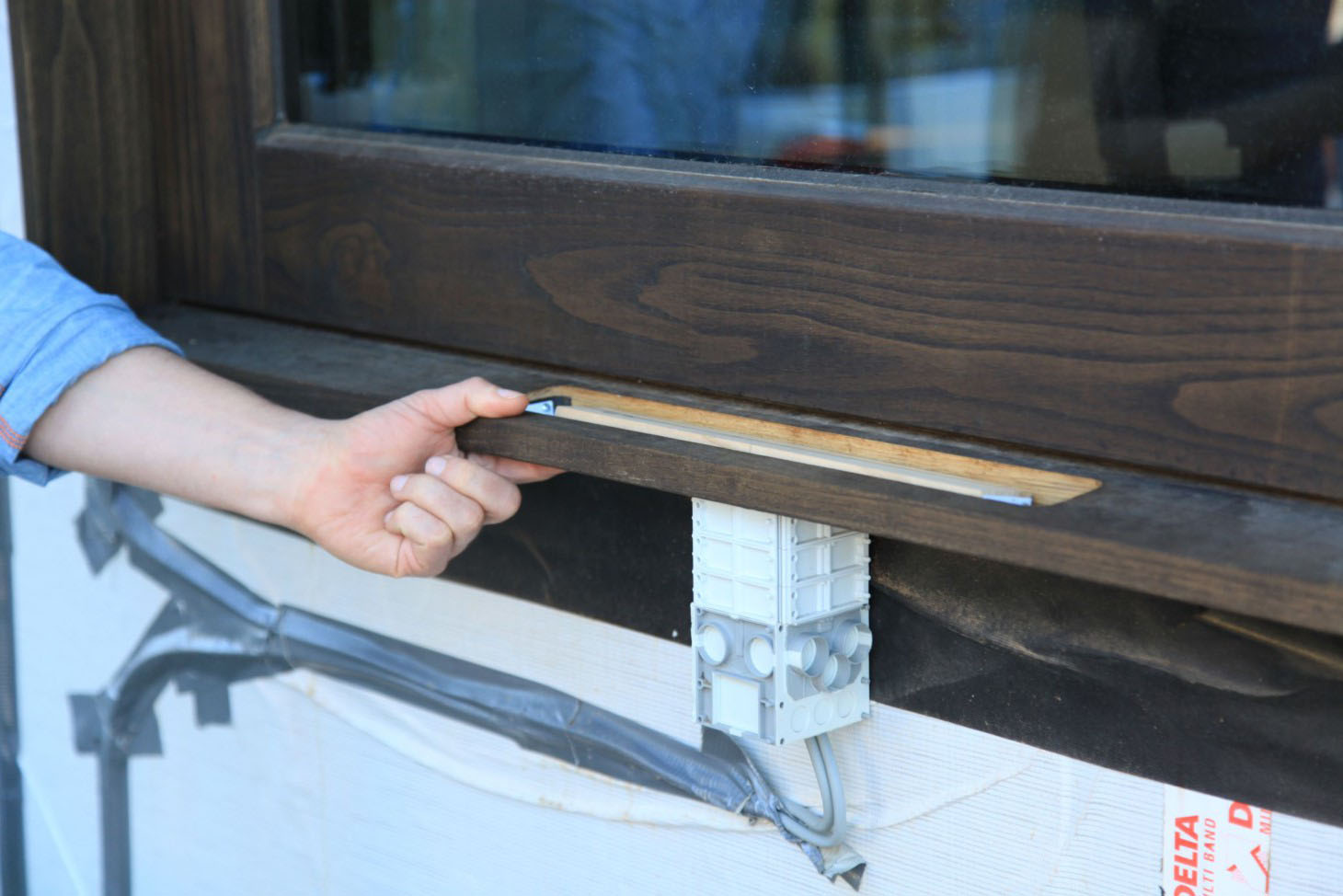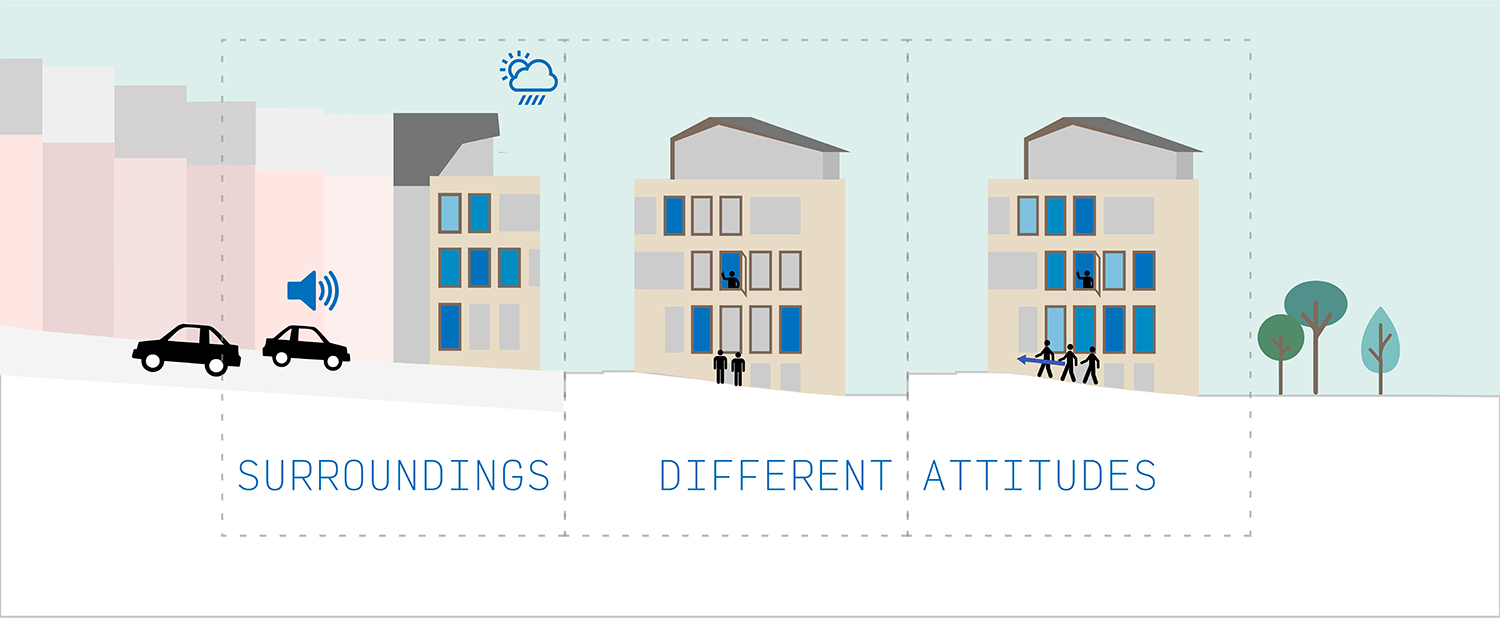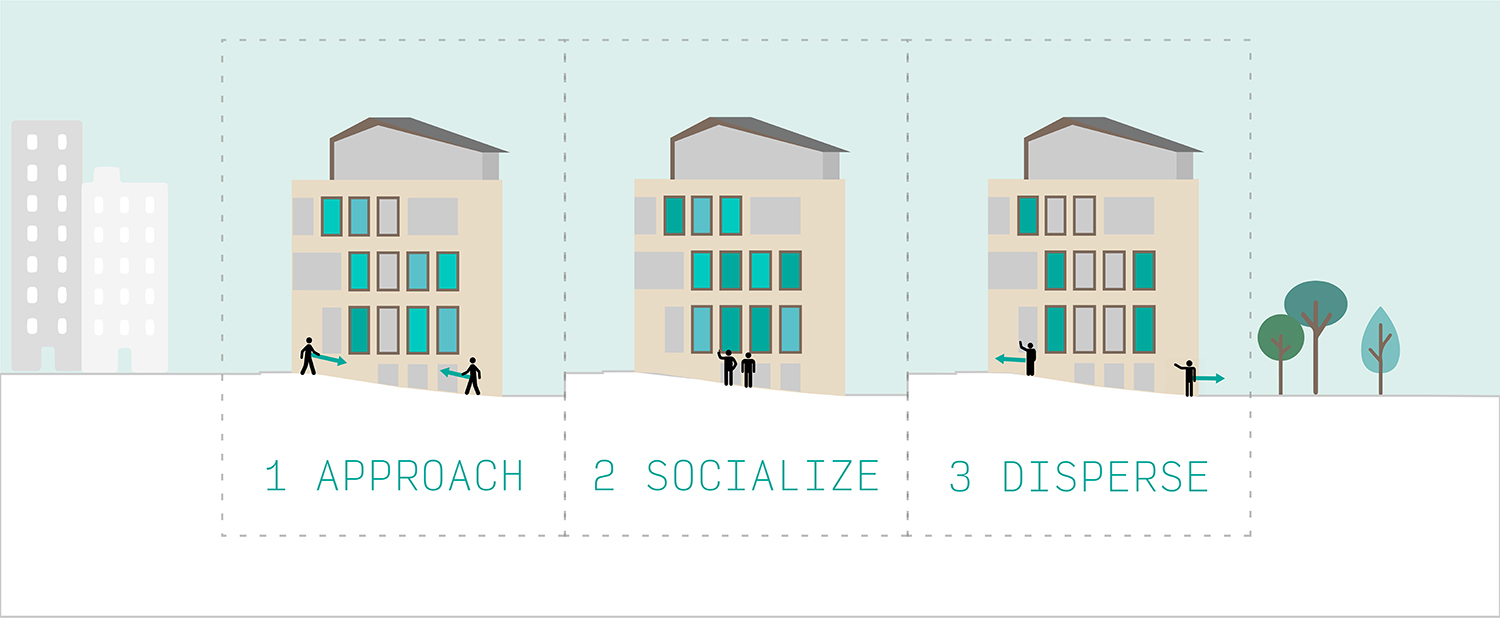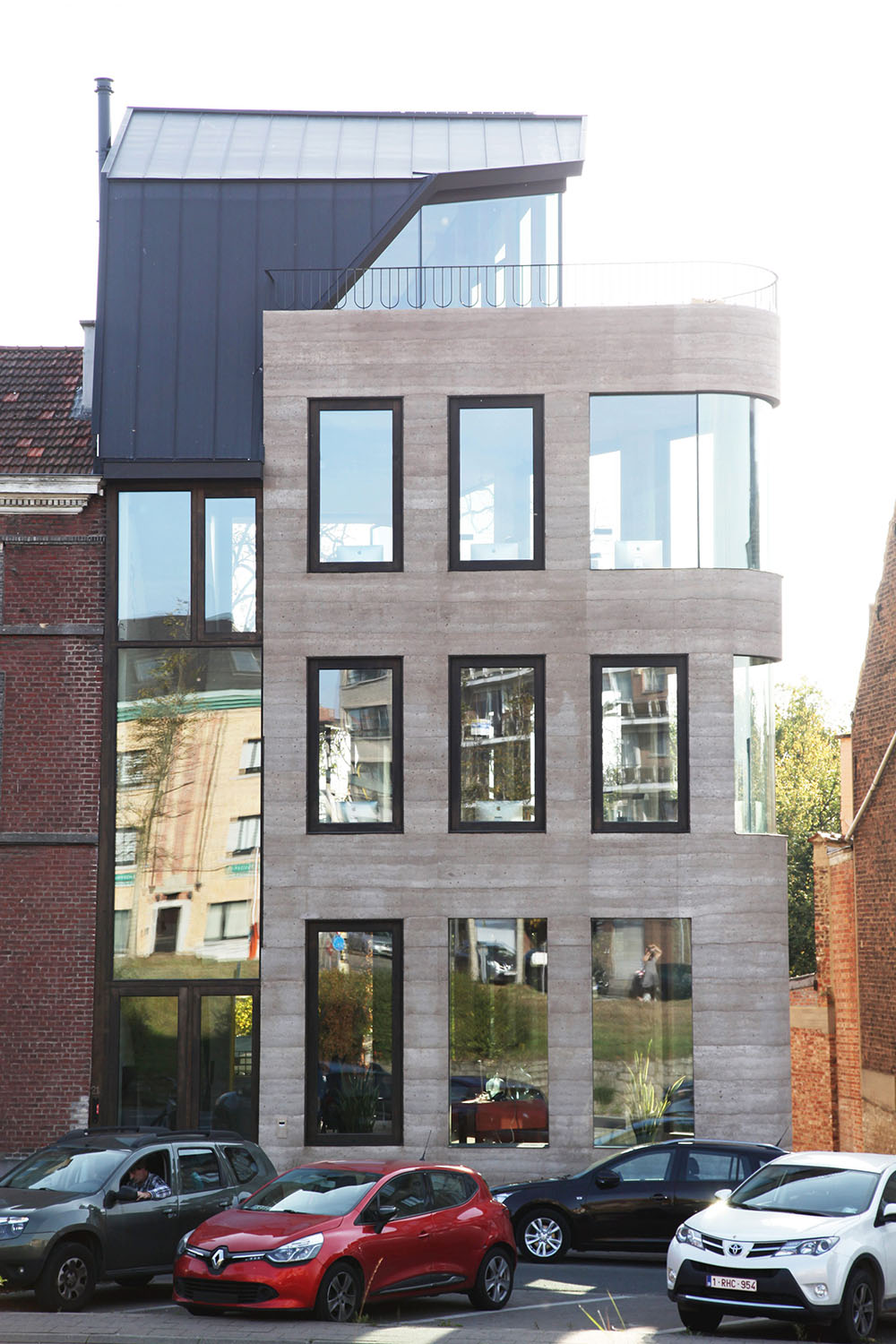MUURmelaar: an Interactive Sound-based Media Facade with Architectural Value
Passers-By Trigger a Dynamic Soundscape via a Responsive Facade
(Nederlandse tekst onderaan)
MUURmelaar, a quirky translation of “a mumbling wall person”, is an architectural facade that translates the behavior of passers-by into a dynamic soundscape of intriguing sounds and rhythms. The project aims to augment the architectural experience of the facade, the act of passing through a narrow pathway, and the meaning of the building within the neighborhood. This interactive architecture forms the result of the collaboration between the architectural office DMOA and the research group Research[x]Design (RxD) at the Department of Architecture of KU Leuven.
Context
Inspired by the wish to integrate their new headquarters in the local neighborhood, DMOA explored the concept of a “living facade”: a facade that compels passers-by to engage with their architecture and their office, that motivates people to converse with each other, that characterizes the neighborhood in a meaningful way. In collaboration with the research group Research[x]Design, first experiments were conducted to create an architectural and authentic way of expression, which is able to exploit the unique properties of physical materials within the facade to generate dynamic atmospheres. This challenge became the research subject of the Master thesis of Master in Engineering: Architecture student Maarten Houben, who under close supervision of prof. Andrew Vande Moere developed a new kind of interactive media architecture facade. Next to the conceptual and technological implementation, these researchers are particularly interested in determining the actual impact of the responsiveness of this facade.
Architectural Experience
The concept behind MUURmelaar is deeply grounded in architectural argumentation. The interactive facade connects the pulsing busyness of the beltway around Leuven with the perplexing silence and nature of a local park. Unsuspecting passers-by are surprised by a soundscape of sounds and rhythms, which adapt immediately according to the speed and directions of their movements. Walking through the banal pathway becomes an exciting experience, which becomes the motivation to discover, converse or experiment with or about the architecture. The spatial experience is enriched with the dimension of temporality that augments the existing architectural qualities, such as the used materials, the rhythm of the windows, the scale of the facade, or the semi-private atmosphere of the pathway.
Architectural Integration
After many creative experiments, the team decided to interpret the prevalent wooden window frames as architectural ‘instruments’. Each of the seventeen window frames is equipped with a spring-actuated wooden block, which is agitated by an invisible and electronically controlled small hammer. A camera registers the movements of anonymous passers-by, and translate these in a responsive sound landscape, consisting of unique and ever-changing combinations of wooden sounds with different tones and rhythms.
Scientific Relevance
Modern technologies enable architects to dynamically control spatial qualities, yet this opportunity is mostly used for functional goals, such as to optimize climate, ventilation or lighting conditions for reasons of human comfort. Motivated by recent scientific insights in how good architecture seems to positively influence measures of human health, productivity and wellbeing, we take on the challenge to investigate how a more ‘responsive’ architecture could take on a more anticipating and facilitating role in influencing the human experience of space. Within this context, RxD investigates the actual impact of MUURmelaar on difference levels of scales and categories of end-users.
MUURmelaar -de murmelende muur- is een architectonische gevel die het gedrag van voorbijgangers anoniem waarneemt, en dit vertaalt naar een dynamisch landschap van klanken van intrigerende tonen en ritmes. Dit project tracht de architecturale ervaring van de gevel, het bewandelen van het gangpad ervoor, en de betekenis van het gebouw in de omliggende buurt op een zinvolle manier te vergroten. Deze interactieve architectuur vormt het resultaat van een succesvolle samenwerking tussen het architectenbureau DMOA en de onderzoeksgroep Research[x]Design (RxD) van het Departement Architectuur aan de KU Leuven.
Context
Geïnspireerd door de wens om hun nieuw hoofdkwartier op een spannende manier te integreren in de buurt, besloot DMOA om op zoek te gaan naar een concept voor een ‘levende’ gevel: een gevel die in staat is om voorbijgangers te boeien, die aanleiding kan zijn om in contact te treden met buurtbewoners, en door haar betekenisvolle uitdrukking de buurt op een positieve manier kan karakteriseren. In samenwerking met onderzoeksgroep Research[x]Design (RxD) werd er geëxperimenteerd om een authentieke en voor architectuur relevante manier van expressie te ontwikkelen, welke in staat is om eigenschappen van fysieke materialen in een gevel om te vormen tot een dynamische atmosfeer. Deze uitdaging werd het onderwerp van de master thesis van burgerlijk ingenieur-architect student Maarten Houben, wie onder nauwe begeleiding van prof. Andrew Vande Moere (KU Leuven) in staat was om een permanente interactieve façade te ontwikkelen. Naast de conceptuele en technologische implementatie, zijn deze onderzoekers ook geïnteresseerd in het meten van de werkelijke impact van de responsiviteit van deze façade.
Collectieve ervaring
Het concept van MUURmelaar is diep geworteld in architecturale argumentatie. De interactieve façade verbindt de pulserende drukte van de ring van Leuven met de perplexe stilte en de natuur van het achterliggend Ruelenspark. Nietsvermoedende voorbijgangers worden verrast met een klankspel van intrigerende geluiden, welke zich onmiddellijk blijken aan te passen aan de snelheid en richting van hun of bewegingen. Het doorwandelen van een banaal pad wordt onverwacht een spannende belevenis, welke de aanleiding kan worden om te ontdekken, te overleggen of te experimenteren in dialoog met de architectuur. De ruimtelijke beleving wordt verrijkt met de dimensie van tijdelijkheid, die de reeds aanwezige architecturale kwaliteiten versterkt, zoals de gebruikte materialen (aangestampt beton en kastanjehout), het ritme van de ramen, de schaal van de hoge gevel, of het semi-private atmosfeer van het pad.
Integratie in architectuur
Na tal van creatieve experimenten werd besloten om de opvallende houten raamkaders te interpreteren als architecturale ‘instrumenten’. In elk van de zeventien raamdorpels werd een verend houtblokje bevestigd dat wordt aangeslagen door een in de dorpel onzichtbaar geïntegreerd, elektronisch gestuurd hamertje. Een camera registreert op een anonieme manier de bewegingen van voorbijgangers en vertaalt deze in een responsieve geluidslandschap, bestaande uit unieke combinaties van houtklanken met verschillende tonen en ritmes.
Wetenschappelijke relevantie
Moderne technologieën stellen architecten in staat om ruimtelijke aspecten op een dynamische manier te veranderen. Momenteel wordt deze mogelijkheid veelal gebruikt voor functionele doeleinden, zoals voor het optimaliseren van verwarming, ventilatie of verlichting naargelang menselijke comfort vereisten. Gemotiveerd door recente wetenschappelijke inzichten over hoe kwaliteitsvolle architectuur de menselijke gezondheid, productiviteit en welzijn positief kan beïnvloeden, stellen we ons de vraag hoe een meer responsieve architectuur een anticiperende en faciliterende rol kan spelen in het beïnvloeden van de ruimtelijke ervaring. In deze context onderzoekt RxD momenteel de impact van MUURmelaar op verschillende schaalniveaus en categorieën van gebruikers.
Press Kit
- Download images.
Scientific Publications
- Houben, M., Denef, B., Mattelaer, M., Claes, S., Vande Moere, A. (2017). The Meaningful Integration of Interactive Media in Architecture. Conference on Designing Interactive Systems (Extended Abstracts). DIS'17. Edinburgh, 10-14 June 2017 (pp. 187-191).
- https://doi.org/10.1145/3064857.3079143
Awards
- Maarten Houben, The Integration of Architectural Qualities in Interactive Architecture: Design and Prototyping of a Sound-Based Media Façade, master thesis for the degree of "Master in Engineering: Architecture", winner of BESIX Master Thesis Award 2017.
link - Nominated and finalist for Belgian Building Award 2017, in Category "Art Integration".
link


